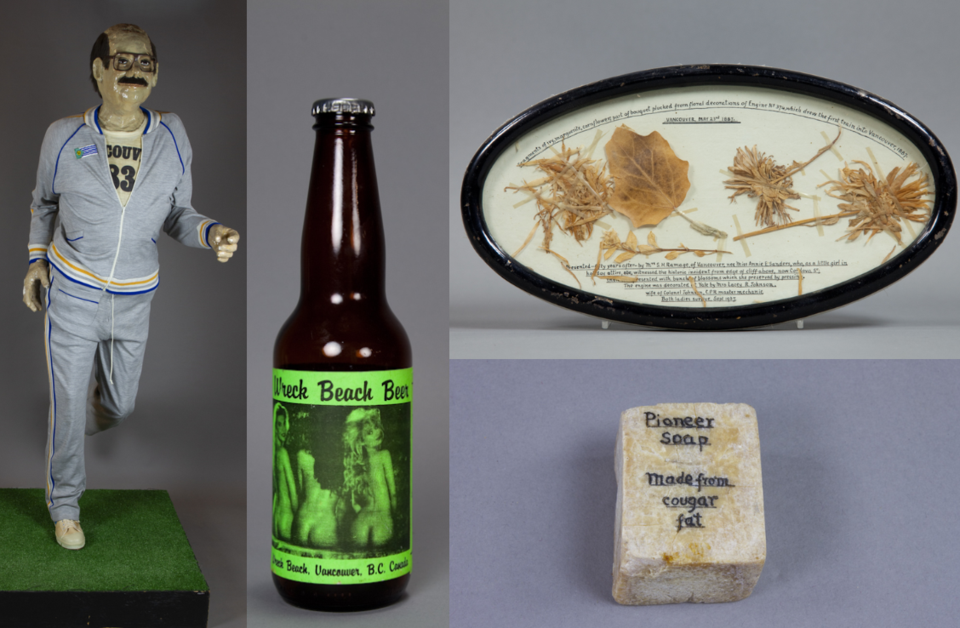The is a fascinating place for anyone interested in the history of the city.
With artifacts dating back to the pre-contact First Nations in the area up to more recent times, there is plenty on display at the museum in Vanier Park. But the museum has thousands more pieces hidden away, safely stored for future exhibitions and generations.
Among those are some unique and unusual items that are very Vancouver. Here are five of them.
1. A life-sized running
What's the difference between a doll and a statue?
Mike Harcourt has faded a bit from the political scene in B.C. and Vancouver, but for more than two decades he was one of the biggest figures in local politics.
He started as a Â鶹´«Ã½Ó³»alderman before becoming the mayor in 1981, and then became an MLA and leader of the NDP in opposition, and finally rose to become premier of B.C. in 1991.
During his stint as mayor, in 1983, the museum held an exhibit called "Dolls," and the museum association commissioned Camrose Ducote to make a life-sized version of Harcourt.
While most statues portray political leaders in some sort of noble stance, this one shows Harcourt running, wearing a pale blue tracksuit.
2. A bottle of
Wreck Beach has long been a bit of a grey area when it comes to certain laws. Before it was officially deemed a nude beach, it was a place where public nudity laws weren't enforced.
At the same time, the beach has a history of underground alcohol and drug sales. This beer, from the 1990s, was made by brewers with the intention of selling it at the beach, which wouldn't have been legal.
A label on the back notes that the beer was only to be sold at the beach by people properly attired in their birthday suits.
3. from the first train to arrive in Vancouver
The first train to arrive in Â鶹´«Ã½Ó³»marked one of the biggest turning points in the city's history.
For years after, the fact Â鶹´«Ã½Ó³»was a terminal city and a port became arguably the biggest economic driver in the city.
Even before the city boomed, locals knew it was a big deal. That first Canadian transcontinental passenger train arrived on May 23, 1887, and a massive crowd waited for it at the foot of Howe Street.
Engine 374 arrived in the city covered in flowers. While it may be a small surprise to find out that the exact train engine retired in Â鶹´«Ã½Ó³»(it's what is inside the Roundhouse Community Centre in Yaletown), it's probably a bigger surprise to learn some of those flowers (which were put on the train in the town of Yale) still exist, too.
Annie Sanders was a little girl when the train arrived and was handed a bouquet from the train made up of ivy, marguerites, and cornflowers.
Given how notable the event was, she decided to preserve the flowers, pressing them in a frame. In 1937, as a married woman in her 50s or 60s, she gave them to the Â鶹´«Ã½Ó³»Archives, which later passed the artifact to the museum.
4. A Stanley Park
Great Blue Herons have been nesting at Stanley Park for decades; the first documented heronry was photographed in 1921, but they were possibly there for a long time before that.
Given the size of the birds, their feathers (when available) are a good size for a pen quill. That was the plan of Sidney Gilbert, who donated this feather found in the 1920s.
5.
Soap, for those who didn't know, was originally made by rendering down fat from different animals.
In most places, that meant cow, sheep, or goat.
However, in B.C. over 100 years ago, pioneer folks would use what was on hand.
In this case, it's a bar of soap from some time between 1900 and 1920 made out of cougar fat.
Some personal care products may try to sound tough, but none are likely to stand up to soap literally made out of a cougar.





